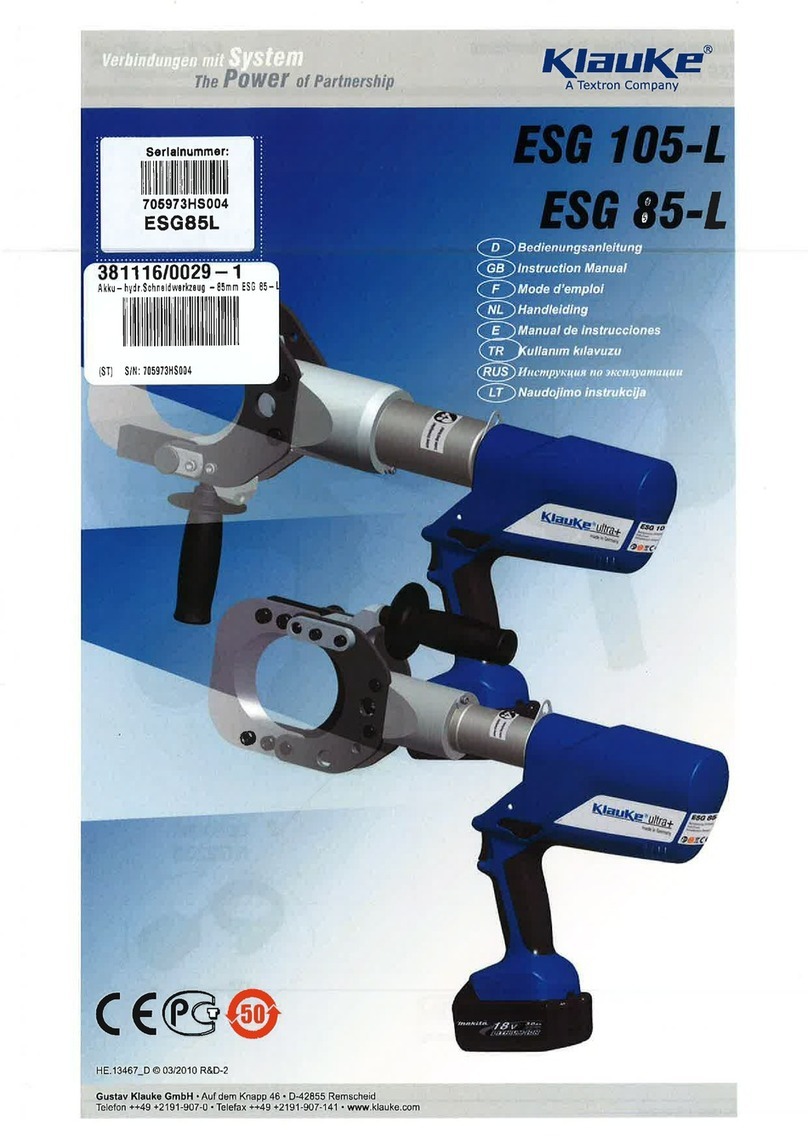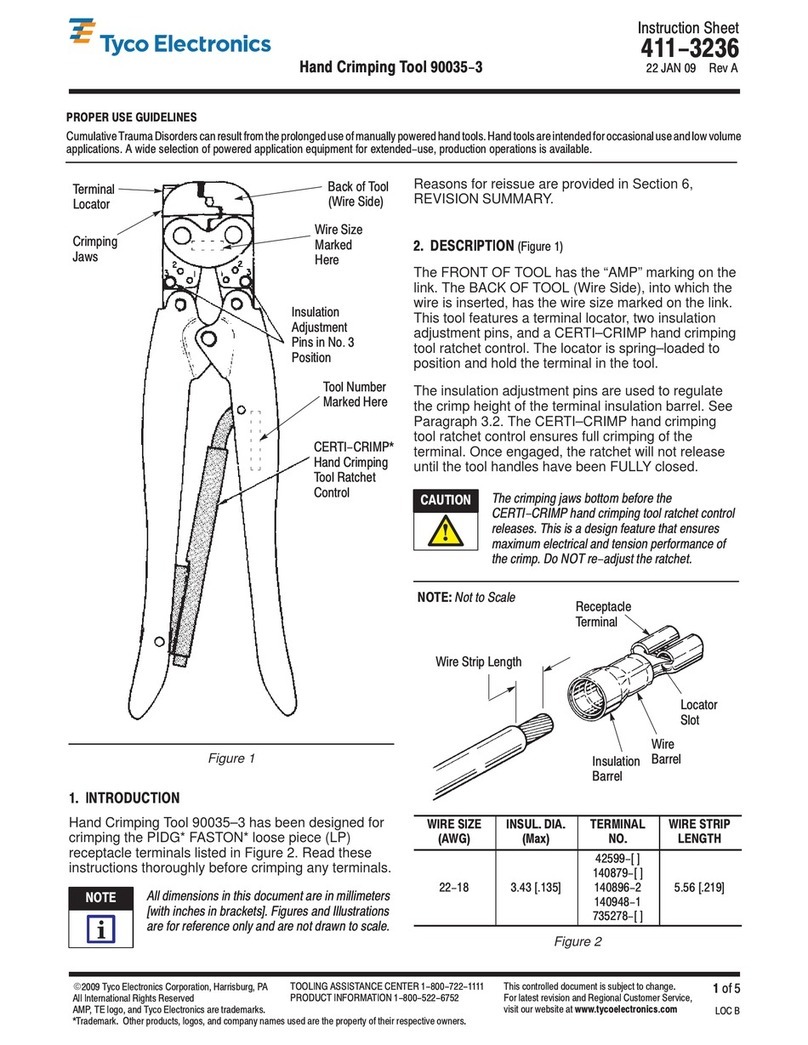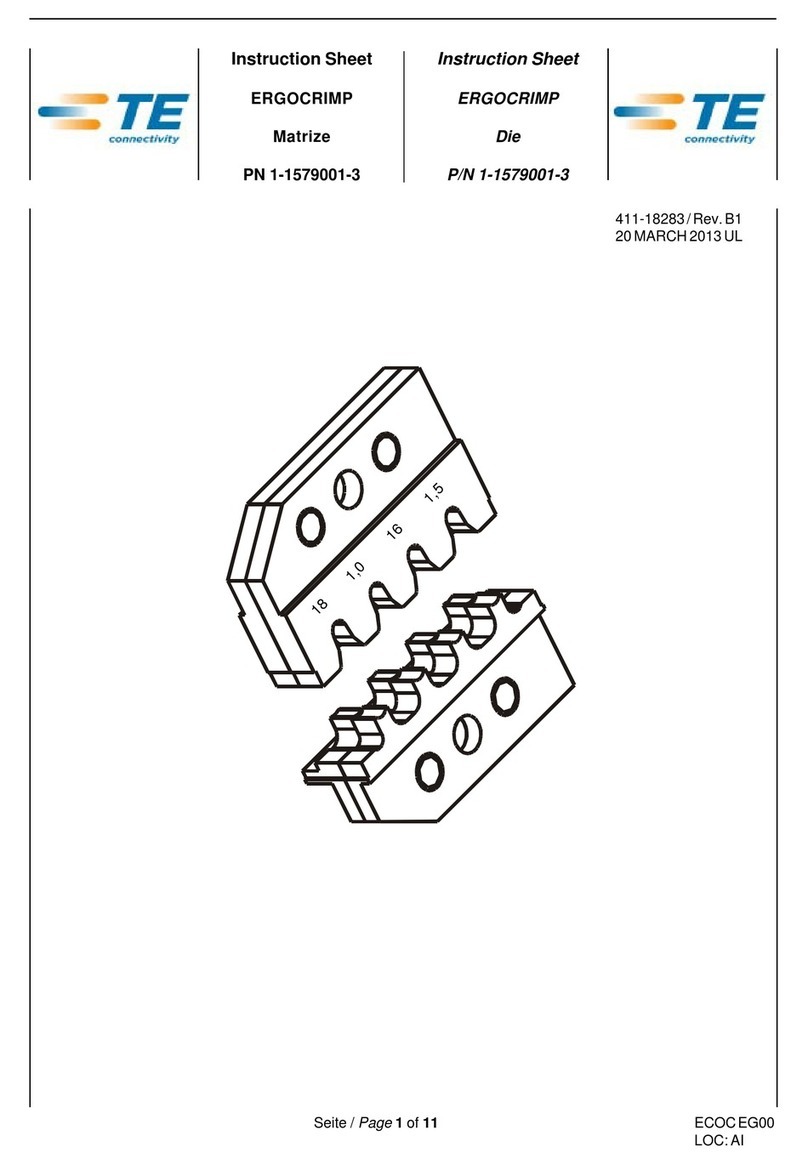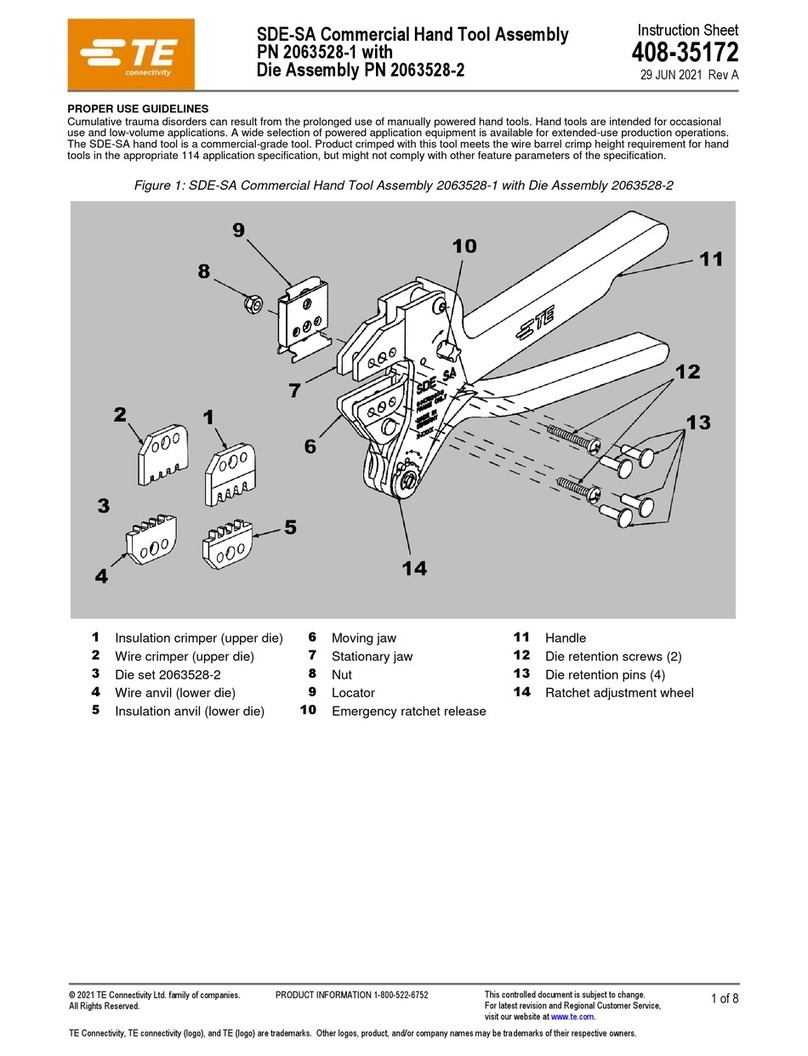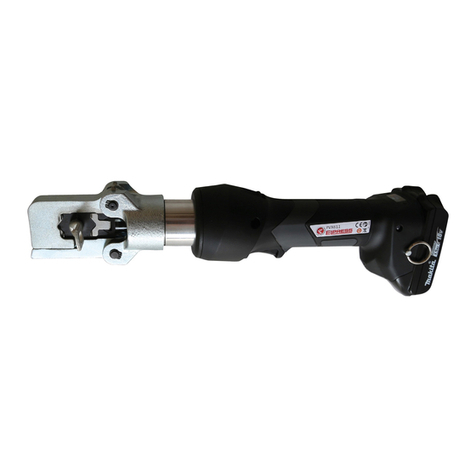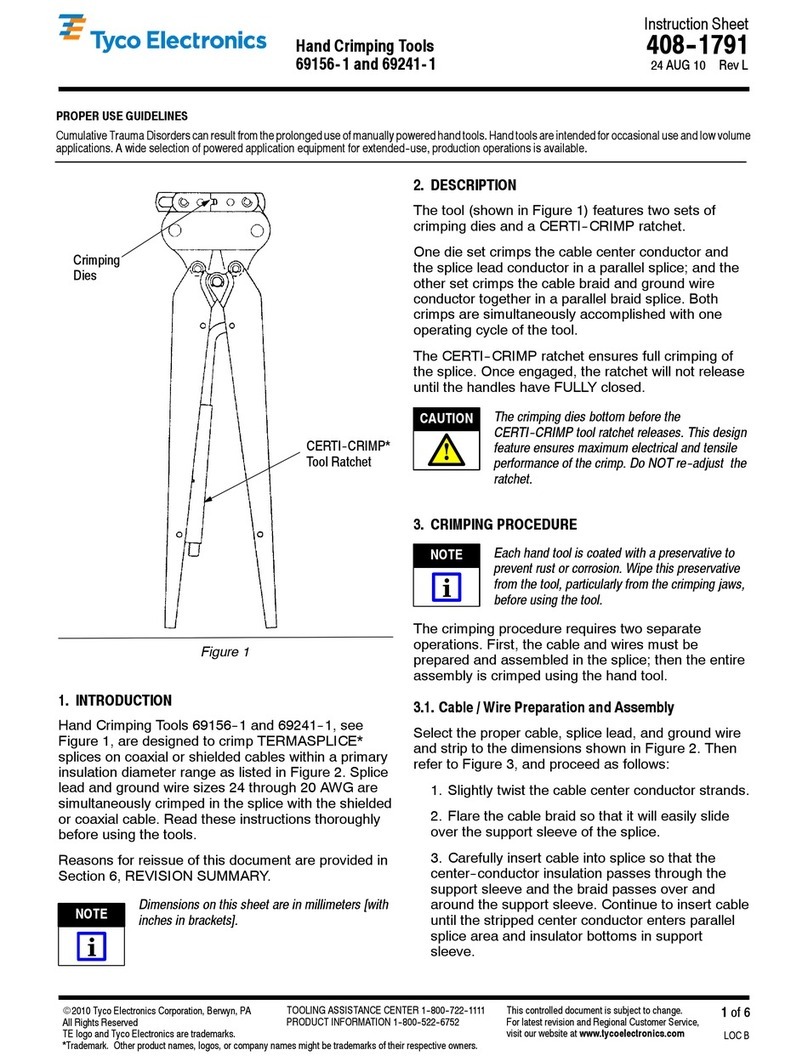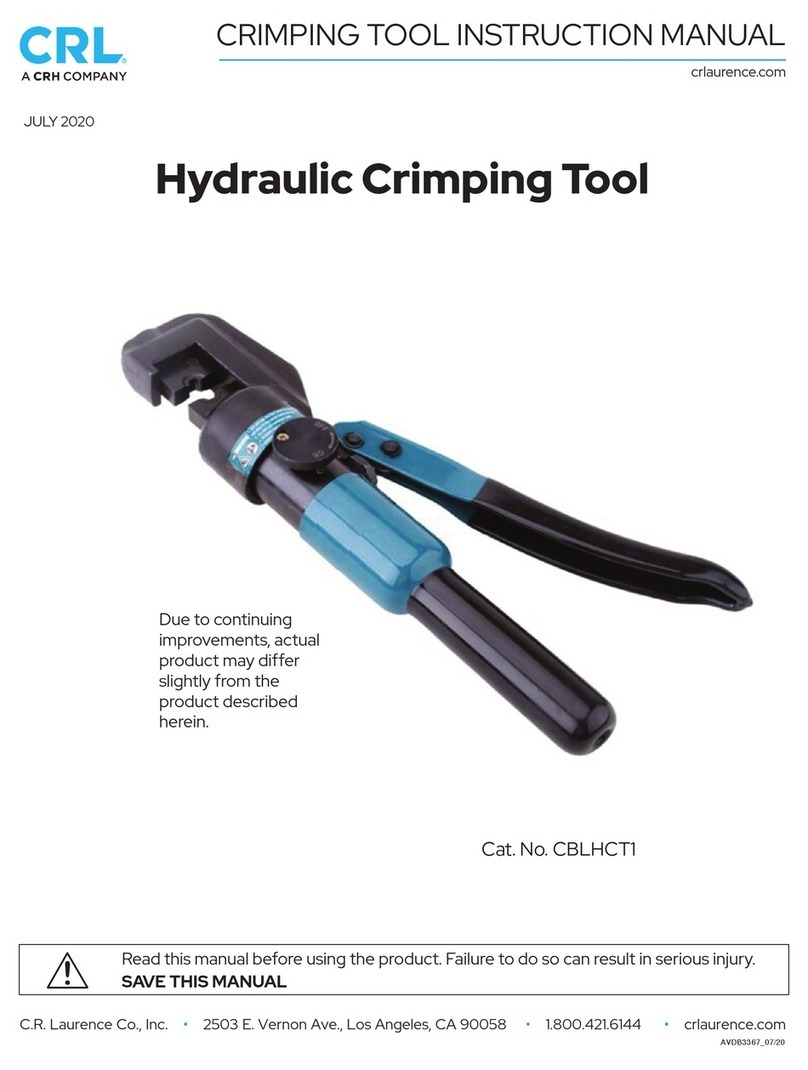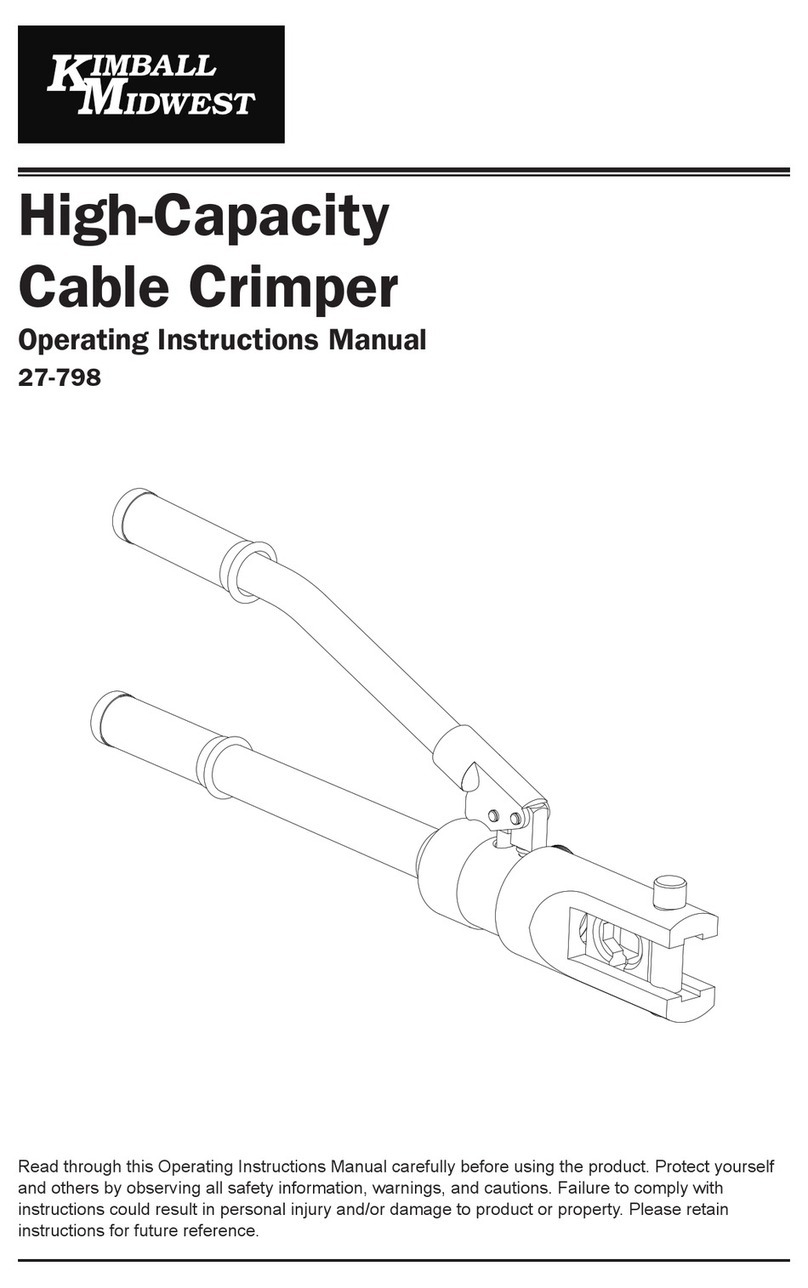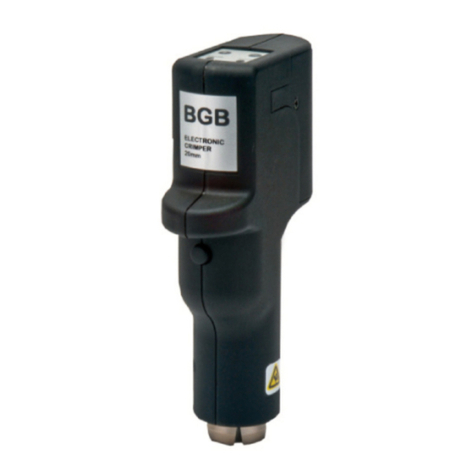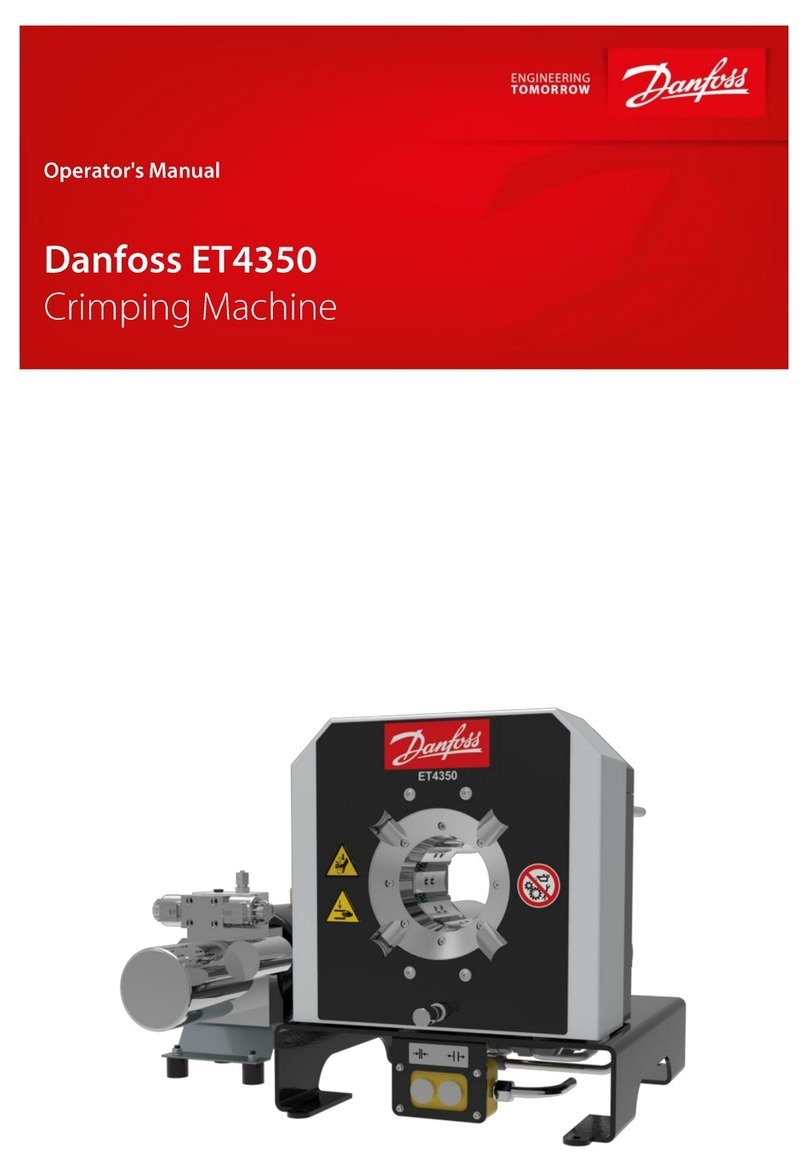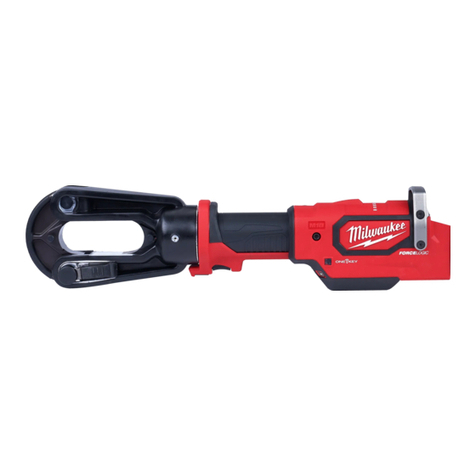Archivage : /
Attention, vous êtes responsable de la maîtrise de ce document si vous « l’enregistrez sous » ou si vous l’imprimez.
5. MAINTENANCE.
5.1. Daily maintenance
•A daily maintenance is required to ensure that the tool is kept in good working condition. Wipe it carefully
with a dry cloth to remove any dirt. Never use solvent for this operation. If the tool has been used in rainy
weather, wipe and dry it completely before storage.
•The head can be cleaned using a gentle solvent (petrol). To do this, hold the tool with its head
down and protect the plastic shell. Wipe and dry.
•The shell can be cleaned using a cloth soaked in soap and water. Never use solvent as some
solvents may attack the plastic material.
•Store the tool in its box in a temperate and dry place (see the battery instructions).
5.2. Indicateurs d’états.
This tool is equipped with two 3-color LEDs to inform the user of its service and battery status.
•Service LED :
- Green fixed light : Tool in working order.
- Green blinking light : Tool in working order, Maintenance to be planned : Schedule to
return the tool to the factory or to an approved workshop.
- Green/Red blinking light : Tool in working order, Maintenance is required : Return the
tool to the factory or an approved workshop.
- Orange fixed light : Power at the limit of tolerance : Schedule to return the tool to the
factory or to an approved workshop.
- Orange blinking light : SD Card or GPS fault : Return the tool to the factory or an
approved workshop.
- Red fixed light : Power out of the tolerance / Cycle time too long : Return the tool to the
factory or an approved workshop.
- Red blinking light : Temperature out of range : If the temperature is too high, leave the
tool to cool for 15 minutes. If the temperature is too low, place it in a temperate room.
•Battery LED :
- Green light : Battery charge upper than 20%.
- Orange light : Battery charge between 0 and 20%: Plan to charge it.
- Red light : Battery charge nearing 0%: Chargethebattery. The tool will not restart in order
to avoid deteriorating the battery through deep discharge.
5.3. Replenishing of oil.
It is recommended to check the hydraulic fluid level every month, and to change it every year or two
years depending on use. The volume of hydraulic oil in the tool tank is about 100 cm3.
•Fully return the piston.
•Remove the battery.
•Remove the oil tank cover (5).
•Keep the tool vertical with the head facing down.
•Remove the cap by turning it and firmly holding the notched part of the tank. Wipe the magnet fixed
in the tank cap to remove any metal particles that may be attached to it.
•Refill with EQUIVIS XV 32 oil using a small squirt until it reaches a few millimeters from the edge
of the tank.
•Refit the cap expulsing any air from the top of the tank.
•To purge all the air, run the tool several times with dies, with the head pointing down, then refill the
tank if necessary.
•Carefully wipe any excess of oil and refit the cover (5).
